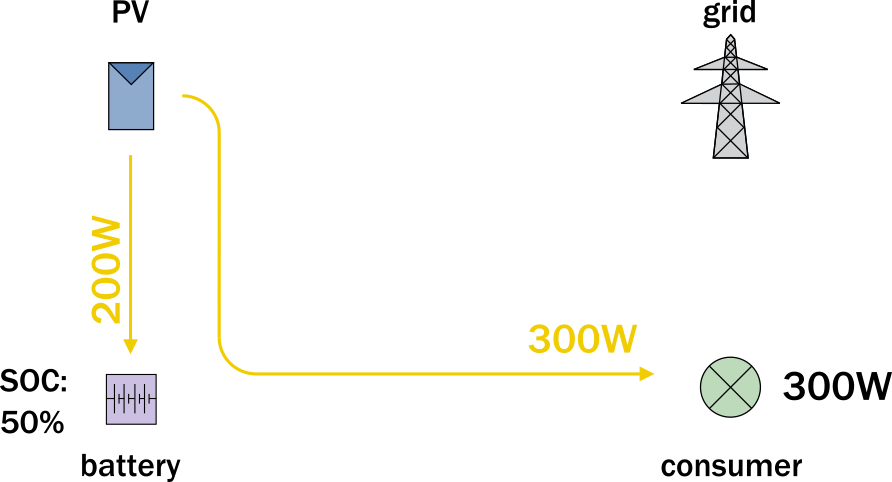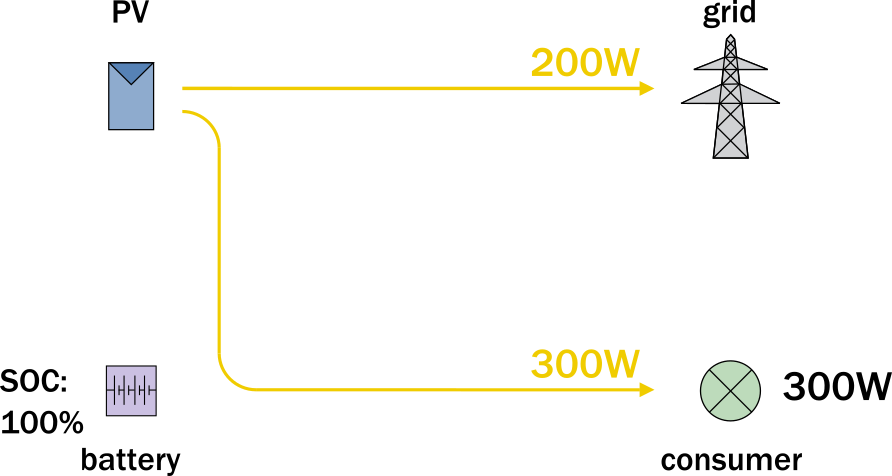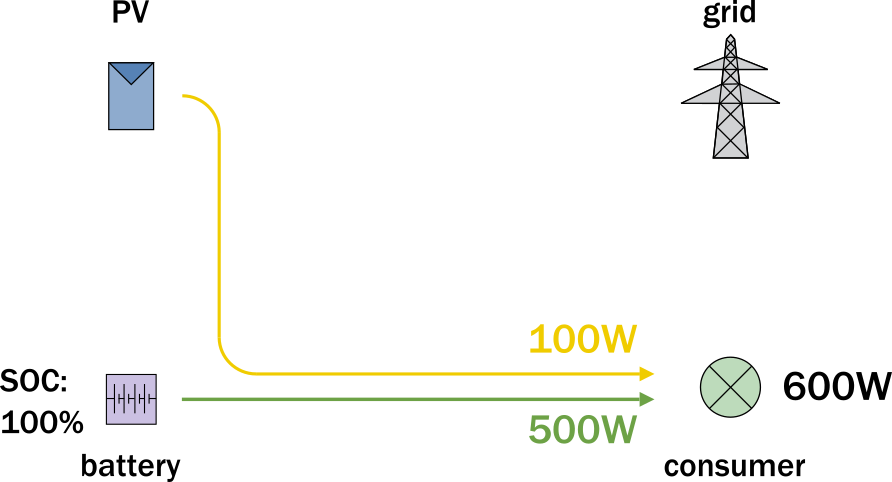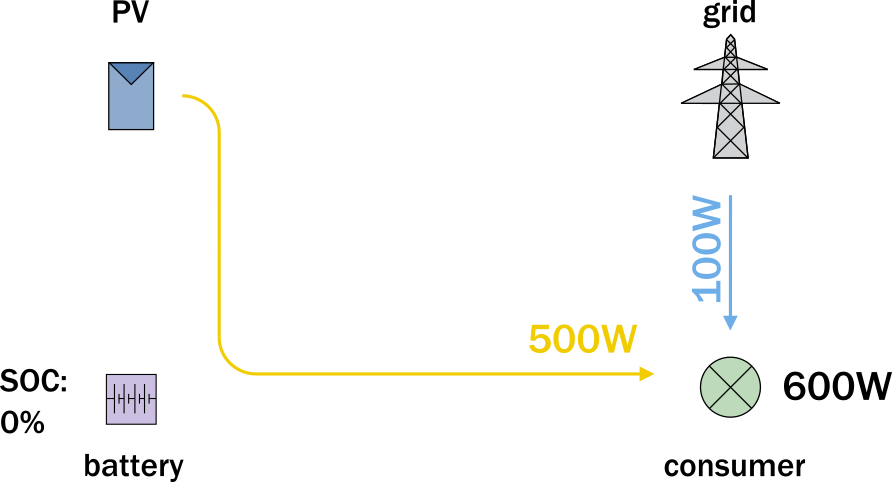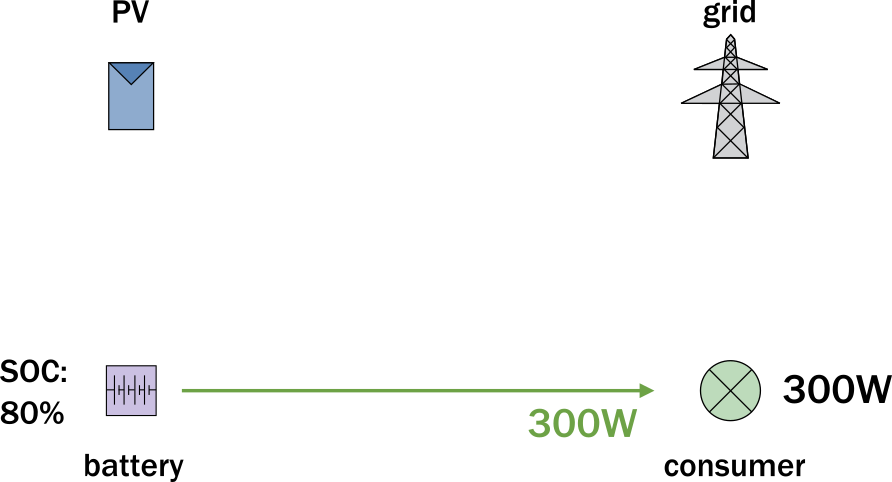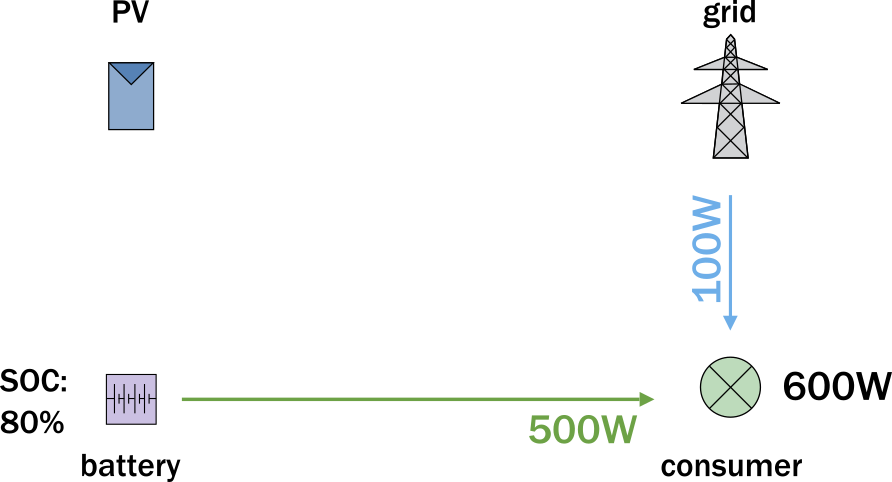Battery systems
Energy Management
Battery systems can store energy from the PV system, release energy to consumers and - for certain types of battery charging - also absorb energy from the grid. The charge controller, which is based on the following logic or prioritization, controls the energy flows:
-
Direct consumption
Consumption is directly covered by PV energy -
Battery discharge
Consumption is covered by the batteries- Up to the capacity limit of the battery system.
- Until the minimum SOC of the batteries is reached.
-
Mains cover
Consumption is covered from the grid -
Battery charge
Surplus PV energy is used to charge the battery.- Up to the capacity limit of the battery system.
- Until the maximum SOC of the batteries is reached.
-
Grid feed-in
Surplus PV energy is fed into the grid. -
Maintenance charge
Batteries are only charged with energy from the grid if charging methods are used to maintain the batteries (boost, full and equalisation charging) and PV energy is not available in sufficient quantities.
The energy from the PV system, battery system and grid is added up. The producers are therefore also used to cover consumption at the same time, if necessary.
Energy from the battery system is never fed into the grid, except when using the time-controlled discharge function.
Type of coupling
In principle, battery systems can be divided into AC- and DC-coupled topologies.
In AC-coupled systems, the PV module and battery components are coupled behind the DC/AC inverter. There is an inverter (DC/AC) for the PV system and a bidirectional inverter (AC/DC and DC/AC) for the batteries. These systems are the most flexible to design, are easy to retrofit into existing systems and may also be able to draw energy from the grid (e.g. for battery maintenance charges).
In DC-coupled systems, the PV module and battery are converted to the same voltage level and connected on the DC side. Two types of wiring are particularly common:
-
DC generator coupling
Here the battery system is connected directly to the DC line between the PV generator and the MPP tracker of the PV inverter. The battery system also needs an MPP tracker to handle the variable voltage of the PV generator. The advantage of this coupling is the simple retrofitting into existing PV systems. -
DC-intermediate coupling
The battery system is connected to the DC intermediate circuit of the PV inverter, i.e. between the MPP tracker (with connected boost converter) and the DC/AC converter stage. This has the advantage that the battery system does not require its own MPP tracker. However, these systems cannot be easily integrated into existing PV systems.
Connection to the power grid
In practice, it must be ensured that the consumers, the PV system and the battery system are connected to the various phases of the power grid in such a way that energy can be exchanged.
In PV*SOL® it is assumed that all consumers, PV and battery inverters are connected properly. Consumers that are not connected to the battery system, because they are for example connected on another phase, should not be simulated. On the consumer side, only the consumption that can and should be covered by the PV and/or battery system should be entered.
See also

